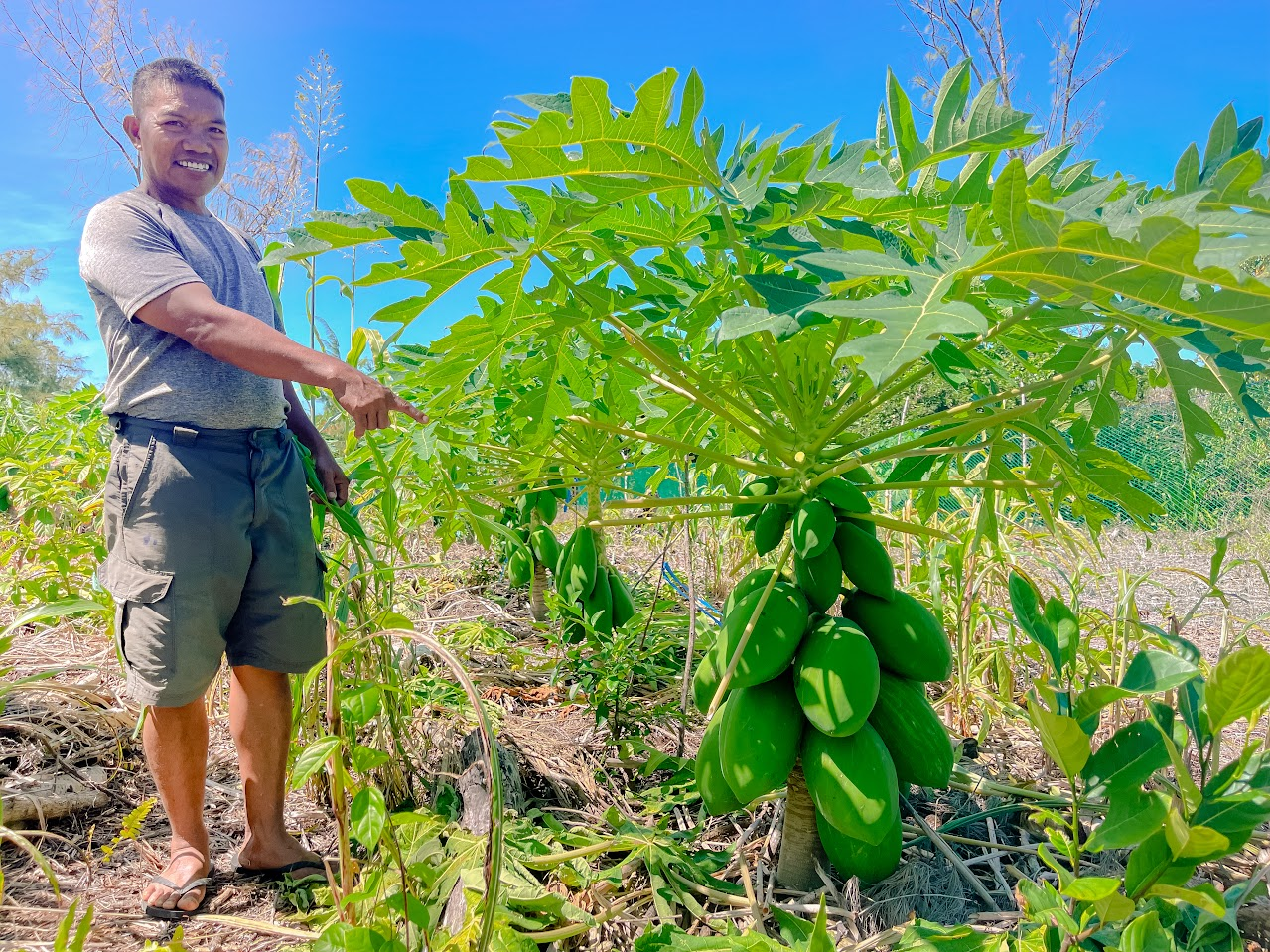
Implementing the knowledge and methods gained at the NMC-CREES Regenerative Agriculture Workshop in November 2023, Ambrosio “Ambi” Alubia proudly shows his thriving papaya plants. Growing in between and around the papaya are calamansi, mango, a mix of cover crops such as buckwheat, Daikon radish, sun hemp, cowpea, and sorghum, and other food-producing plants.
AMBROSIO “Ambi” Alubia, a Rota farmer who exports produce to Guam and Saipan, has witnessed significant success in the growth of his papaya fruits following his participation in Northern Marianas College-Cooperative Research, Extension, and Education Services’ regenerative agriculture workshops along with technical assistance provided by CREES personnel.
The workshops offer a variety of valuable knowledge for farmers of any experience level to establish and maintain a prosperous regenerative agroforestry plot.
Alubia participated in the November 2023 regenerative agriculture workshops, and had meetings with Dr. Craig Elevitch, Extension Agent Jesse Deleon Guerrero, and the CREES Agroforestry team to address agricultural goals, conduct site assessments, discuss plant selection, and determine optimal planting configurations.
These collaborative sessions resulted in the finalization of a plot design, followed by its installation.
Since then, Alubia’s papaya plants have thrived, producing an abundant harvest of large, healthy fruit.
He attributes the recent flourishing of his papaya plants to the regenerative agriculture practices he implemented as a result of the workshop.
Alubia took notice of particular practices from regenerative methods such as mulching, cover cropping, growing a variety of diverse plant species densely, and providing occasional shade — techniques he hadn’t implemented before.
The new area of land that Alubia used for testing the knowledge that he obtained from the CREES workshops was not ideal for farming due to the soil conditions and the thick fern ground cover. Running water is also not available in the area, so Alubia hauls it in by truck for irrigation. Still, he thought these conditions provided a great opportunity to see if the regenerative agriculture techniques would work.
“We are pleased to learn that the proof of concept project by Mr. Alubia has yielded desirable results. I commend Ambi for his willingness to learn and adapt his farming techniques. We have also learned a lot from him as well,” stated Interim Dean Patty Coleman of NMC-CREES.
As a seasoned farmer, Alubia expressed his appreciation for the methods suggested by the workshops. He credits the practices he’s applied to his farm as a result of the November workshops and the follow-up meetings with CREES Extension personnel and Dr. Craig Elevitch, agroforestry expert.
With decades of experience in farming, Alubia said his skills have been elevated as he maintains his successful agroforestry plot.











